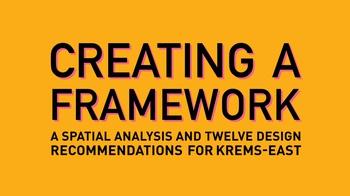
Painting a portrait | Creating a framework
A film and booklet by Corné Strootman
Corné Strootman explored during his residency in Krems from September till November 2020 the relationship between Krems and the Wachau valley. Krems is divided into two distinct parts. One part is historic and picturesque. It is the beginning of the of Wachau valley, UNESCO world heritage. The other part is a mixture of modern industry, commerce and housing, described as Krems-East. How did these two distinct landscapes develop in such close vicinity? How do they relate? And can the qualities of the two landscapes be the start of a mutually beneficial relationship? Aus der Recherche ist ein Kurzfilm und eine Brochüre entstanden.
Film
Painting a portrait: on the fringe of world heritage
Trailer for the short film "Painting a portrait: On the fringe of world heritage" (2020) by Corné Strootman, narrated by Johan Nane Simonsen.
The main way in which Corné Strootman explored Krems and the Wachau valley was through film. The exploration resulted in the short film “Painting a portrait: on the fringe of world heritage”. The film tells the story of three painters who lived and worked in the Wachau at the turn of the century. Their life-stories are juxtaposed with a portrait of the atmospheric qualities of the landscape of Krems-Ost. In this way "Painting a picture" explores the relationship between the two parts of Krems, how the appreciation of one landscape influences the development of another.
Booklet
Creating a framework. A spatial analysis and twelve design recommendations for Krems-East
Cover detail: Creating a Framework
During the making of the film Strootman developed numerous design proposals for Krems-East in the back of his head. The booklet "Creating a framework. A spatial analysis and twelve design recommendations for Krems-East" repurposes the research done for the film to make a case for some of these proposals, like the reintroduction of an alluvial forest in Krems-East. The booklet makes explicit the processes and spatial forms of the region, and as such it stimulates a discourse of planological and architectural development.


